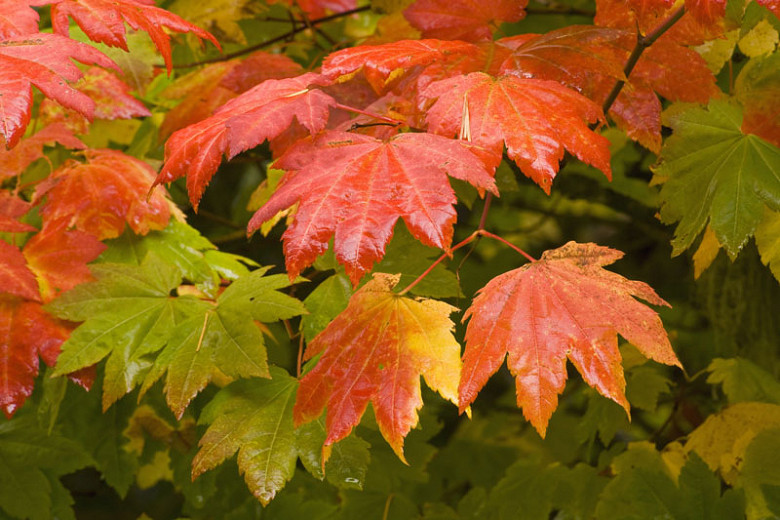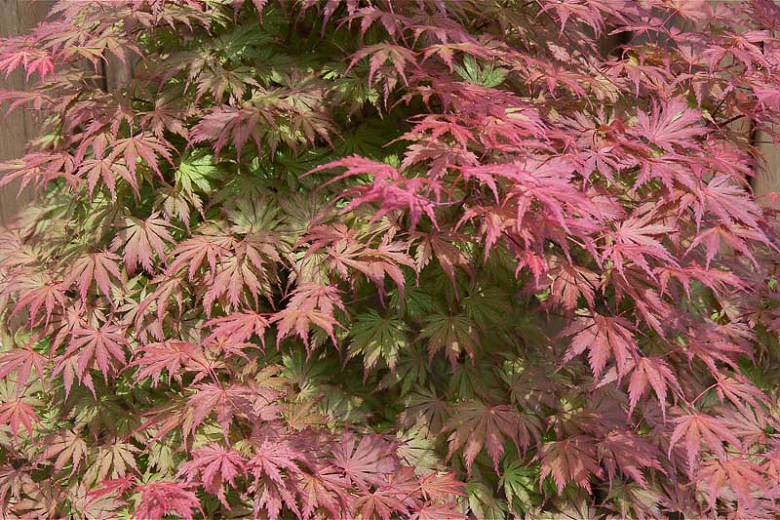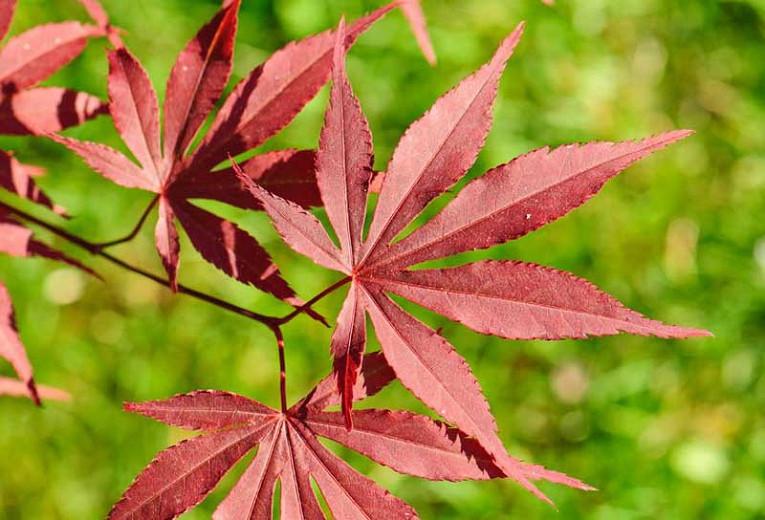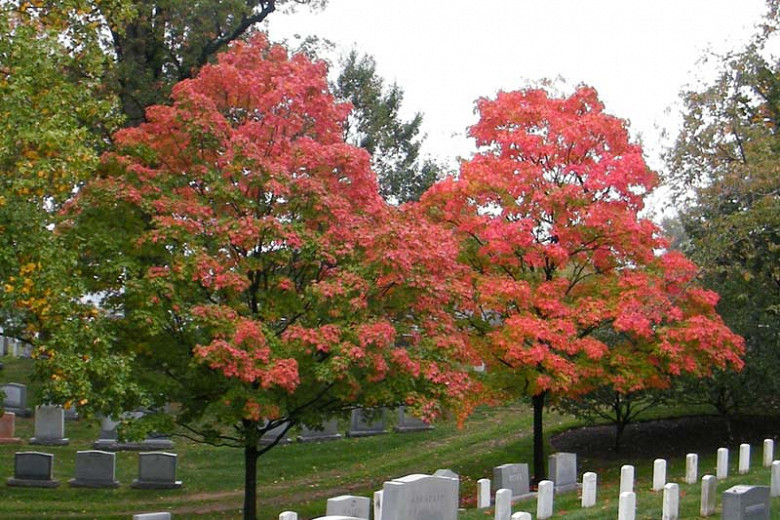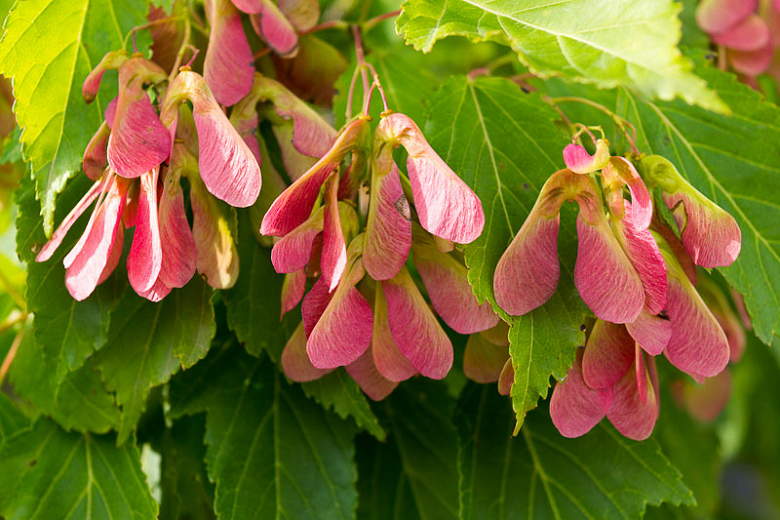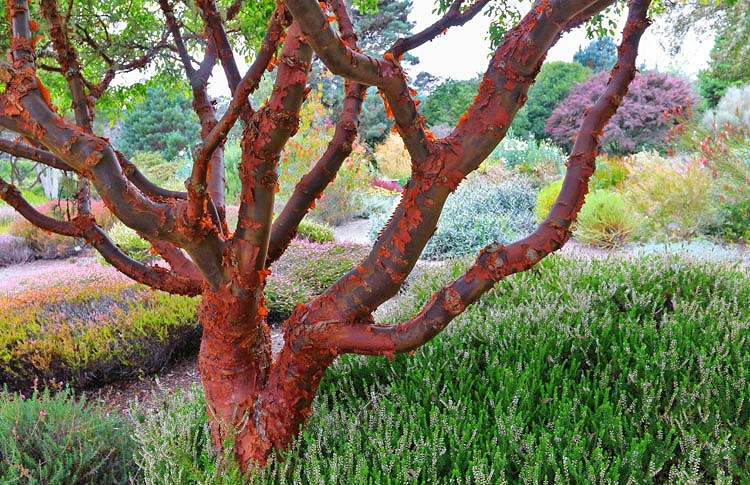Acer circinatum (Vine Maple)
Acer circinatum (Vine Maple) is most commonly grown as a spreading bushy large shrub, but it will occasionally form a small to medium-sized tree. Low-branched, multi-stemmed in habit, it usually develops multi-trunks with bright, reddish-green bark. Upright in sunny locations, it takes a delicate horizontal habit in the shade. Vine Maple is noted for its nearly circular deciduous leaves to 3-5 in. long (7-12 cm) with 7-9 palmate lobes. Beautifully colored in most seasons, its broad foliage canopy, elegantly displayed in a tiered pattern, emerges bright green in spring and turns attractive shades of orange and red in the fall. In spring, tiny purple and white flowers are borne in short terminal clusters. They are followed by red-winged fruits, which are consumed by songbirds, game birds, and mammals. Vine Maple performs well in cooler climates, or in shaded and moist locations. This western North American native is a smaller alternative to Japanese Maples. It can be used as a very attractive patio or lawn specimen or in a naturalizing situation, and grouping. Acer circinatum is reported to be the most useful native tree for the landscape in the Pacific Northwest.
- Grows up to 15-25 ft. tall (4-8 m) and 15-20 ft. wide (4-6 m).
- A full sun or part shade lover, this plant is easily grown in fairly fertile, humus-rich, moist, well-drained soils. Will suffer in hot, dry conditions.
- Perfect as a specimen plant.
- Low maintenance, this plant needs little pruning. If pruning is necessary to control the shape, prune during the dormant season and avoid pruning in spring when the sap is running.
- May be affected by verticillium wilt, honey fungus, aphids, caterpillars, mites, and scale insects. Deer resistant.
- Propagate by seed sown outdoors as soon as ripe, by grafting in late winter, or by chip budding in mid-to-late summer.
- Native to North America from British Columbia to California.
Requirements
| Hardiness | 6 – 9 |
|---|---|
| Heat Zones | 4 – 9 |
| Climate Zones | 2, 2B, 3, 3A, 3B, 4, 5, 6, 14, 15, 16, 17, A3 |
| Plant Type | Shrubs, Trees |
| Plant Family | Acer – Maples |
| Exposure | Full Sun, Partial Sun |
| Season of Interest | Spring (Mid,Late)Summer (Early,Mid,Late)Fall |
| Height | 15' – 25' (4.5m – 7.5m) |
| Spread | 15' – 20' (4.5m – 6m) |
| Water Needs | Average |
| Maintenance | Low |
| Soil Type | Clay, Loam |
| Soil pH | Acid, Alkaline, Neutral |
| Soil Drainage | Moist but Well-Drained |
| Characteristics | Showy |
| Native Plants | United States, Alaska, California, Pacific Northwest, Oregon, Washington |
| Tolerance | Deer |
| Attracts | Birds, Butterflies |
| Garden Uses | Rain Gardens |
| Garden Styles | Informal and Cottage, Prairie and Meadow |
